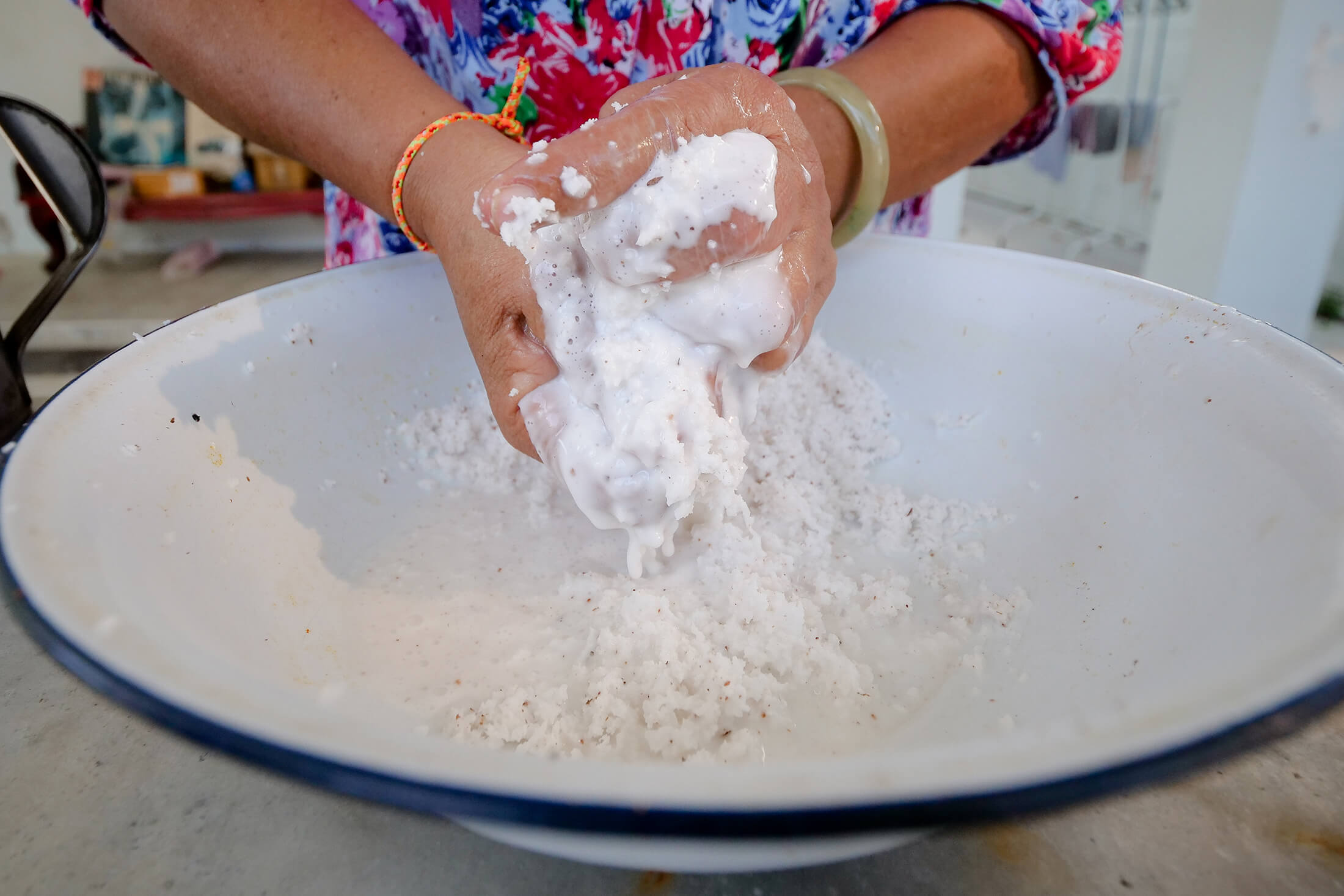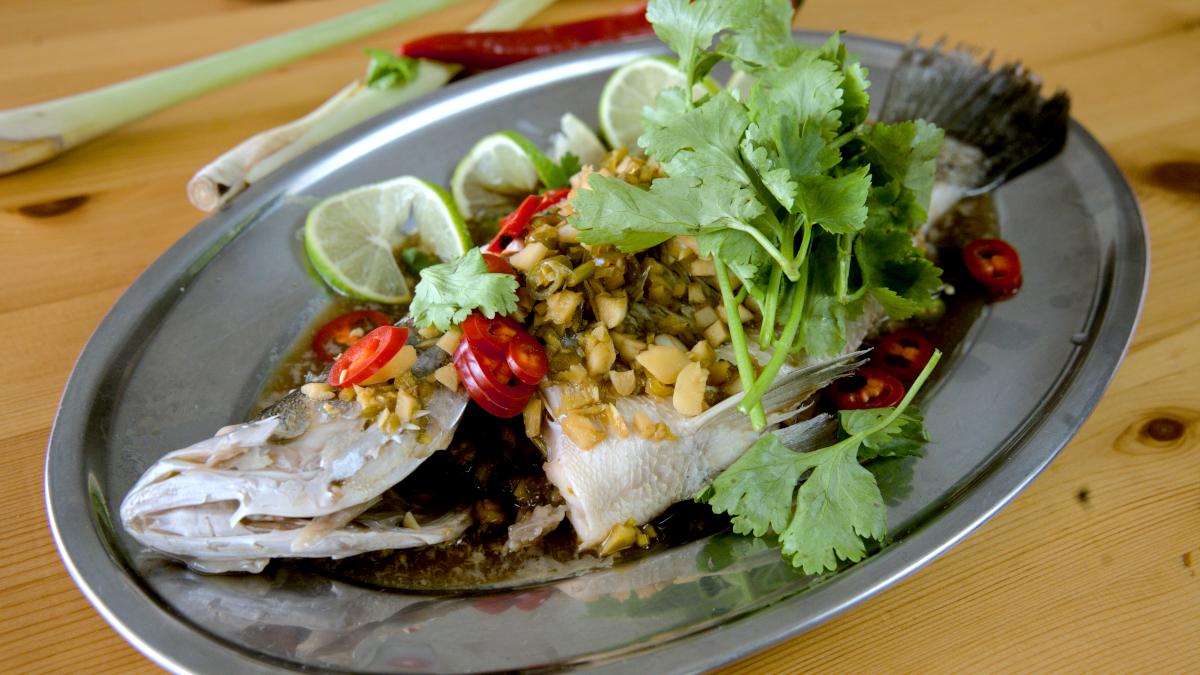Learning how to make freshly squeezed coconut milk is one of the most effective ways to enhance your Thai cooking experience. By preparing your own coconut milk, you ensure that any Thai dish requiring coconut milk or cream will deliver the richest flavor possible. In this authentic Thai recipe, I will guide you through the step-by-step process of making your own coconut milk.

Mature Coconut covered in tough brown fibrous hairs
While it’s convenient to purchase coconut milk in a can or box (I recommend Aroy-D in the box), I assure you that freshly squeezed coconut milk will elevate the taste of your Thai dishes significantly.
Coconut Cream vs. Coconut Milk
Before we dive into the recipe, let’s clarify the difference between coconut cream and coconut milk. Coconut cream is the first squeeze from mature coconut milk, resulting in a richer and creamier texture. Coconut milk, on the other hand, is typically the second squeeze or a blend of both coconut cream and additional water. In this recipe, we will learn to prepare both.
Mature Coconuts
To make coconut milk, you will need mature coconuts with thick white flesh, not the young coconuts meant for drinking coconut water. Mature coconuts have a hard brown shell and provide a depth of flavor in your cooking that canned coconut milk simply cannot match. In the U.S. or Europe, mature coconuts can often be found at Asian or Latin American grocery stores.
Cracking open a coconut may require some practice, so let’s start with that.
Tools Needed
- Strong knife or cleaver
- Shredding tool
- Two large mixing bowls
- 300 mL of room temperature water (plus another 300 mL for coconut milk)
- Medium saucepan
Ingredients
1 mature coconut (you can repeat the process with as many coconuts as you desire)

Large pieces are much easier to handle when shredding a mature coconut.
Before You Begin
When selecting a coconut, ensure it is a mature brown coconut, not a sweet water green coconut. The key is the meat inside, which should be thick and white. The back edge of a strong knife is ideal for cracking the coconut. Avoid using blunt objects like hammers, as they can create uneven breaks, making it difficult to shred the meat.
The backside of a Chinese cleaver works well, too.

Clean the outside hairs away to avoid them falling into your coconut milk.
Instructions
Find a suitable area where it’s okay for things to get a bit wet when you break open the coconut. Most coconuts have a slight pressure inside, so expect some water to escape when you crack the shell.
Remove all the husk and fibrous hairs from the outside of the coconut, using the sharp edge of your knife. A chopping motion works better than sawing through the hairs. Be careful, as the shell is extremely hard.

If only making coconut milk, then you don’t need any of the coconut water inside.
Opening the Coconut with Caution
Using the back edge of a strong knife, strike the coconut horizontally along the middle with short, quick chops. Rotate the coconut to create a crack all the way around until it separates into two halves. Do not follow through with your strikes; quick taps will suffice.
Don’t worry about the water pouring out; it’s good to drink, but it’s not needed for this recipe. For coconut milk, only the mature meat is used.

Coconut scraper in Thailand.
Step 1
Take your scraping tool and one of the large mixing bowls. Position the bowl under the scraper to catch the coconut flakes. Gently scrape out all the coconut meat from the half-shell, being careful not to dig too deep into the shell. If you notice brown flakes, switch to a different section of the coconut. The desired coconut flakes should be bright white and airy, piling up in the bowl.
Using Hand Tools or a “Rabbit” Scraper
Thai coconut scrapers are designed for safety and efficiency. They are often referred to as “Rabbit scrapers” due to the motion resembling a rabbit’s hind legs. While you can use various methods to shred the coconut meat, using a hand tool is also effective.

Airy shreds of coconut meat are what you want for this recipe.
Slow and Steady
This process requires a gentle touch. Use the coconut shell to protect your hands while avoiding excessive pressure when digging into the meat. Ideally, break the coconut into two equal halves to allow both hands to work effectively. With practice, you can master this technique.
One medium mature coconut should yield about 300 g of coconut shavings.
Note: Avoid using a knife for shredding, as it can be dangerous and time-consuming. A blender is not suitable for making coconut cream, although it can be used for milk, provided you strain out the meat fibers afterward.
Step 2
Prepare 300 mL of room temperature water and pour it over the coconut shavings in the same mixing bowl. Massage the coconut flesh with your hands, mixing thoroughly with the water while squeezing the coconut meat. The resulting liquid that turns white and collects at the bottom of the bowl is the coconut cream you desire.
Strain the shredded coconut through a cloth into a second bowl. This is your rich and thick coconut cream.

Straining the coconut cream.
Step 3 – Making Coconut Milk
To prepare coconut milk the traditional Thai way, you need to separate the coconut cream from the coconut milk. After setting aside the coconut cream, add another 300 mL of room temperature water to the coconut shreds and mix and massage for a few minutes.
Strain the coconut milk into another pan, squeezing the shredded coconut to extract every last drop.

Pure coconut cream.
You will now have a bowl of coconut cream and coconut milk. For Thai recipes, it’s best to keep them separate, although some dishes may require mixing them together. From a single mature coconut, you should yield approximately 500 to 600 mL of coconut milk and cream.





